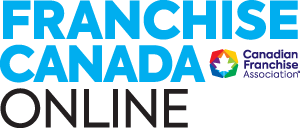Why franchise professionals should be optimistic about 2025, in spite of looming political headwinds
Contributed by CIBC
As we enter 2025, Canadian franchise owners must navigate an evolving economic landscape characterized by cautious optimism and emerging external pressures. Insights from CIBC indicate that the Canadian economy is expected to achieve a soft landing and see growth accelerate in 2025. Downside risks loom large, however, as that outlook does not factor in the effects of any potential tariffs President-elect Donald Trump may place on Canadian goods. This article explores key factors influencing this outlook and their specific impacts on franchise businesses across various sectors.
The economic landscape
The Canadian economy has faced a tumultuous period over the last two years, marked by high inflation, high interest rates, and stagnant growth, particularly in per-capita terms. However, as we enter 2025, the Bank of Canada (BoC) is expected to continue cutting interest rates, supporting an acceleration in GDP growth. CIBC projects that the Canadian economy will experience just under two per cent growth in 2025, and a pickup to 2.5 per cent in 2026. That will be supported by a recovery in the labour market and increased demand as lower interest rates feed through to economic activity. There’s also room for a recovery in productivity to help drive growth, offsetting the impact of slower population gains. This growth trajectory is critical for franchise owners who rely on consumer spending and economic stability.
Key factors for cautious optimism
- Inflation management. CIBC reports that Canada has effectively controlled inflation, with core inflation, which excludes food and energy costs, expected to remain around the two per cent target next year. This stabilization has allowed the BoC to pivot its focus from combating inflation to stimulating economic growth. The impact will be seen in the following types of franchise businesses in 2025:
- Restaurants: A stabilization in inflation for ingredients and supplies could allow restaurant franchise owners to maintain menu prices, thereby attracting more customers, where demand will be helped by labour income growth.
- Retail: Retailers can provide more stable pricing without sacrificing profit margins and denting demand.
- Service: A return to normal purchasing power for consumers should increase demand for services among franchised providers.
- Interest rate projections. CIBC forecasts that the BoC will significantly lower interest rates in 2025 to stimulate GDP growth. If the threat of broad-based tariffs from the U.S. comes to fruition, the BoC will likely have to cut more than currently expected, weakening the Canadian dollar. The areas which could be affected include:
- Cost of borrowing. Lower interest rates will reduce financing costs, enabling franchise owners to invest in expansion or renovations.
- Export opportunities. A weaker Canadian dollar can enhance the profitability of franchises that export goods, making their products more affordable for international buyers, particularly outside of the U.S.
- Supply costs. Franchise businesses based in the U.S. that import goods may face higher costs, prompting a review of supply chains and consideration of domestic sourcing.
- Labour market dynamics. Unemployment is becoming more broad-based across demographic groups in Canada. The acceleration in demand due to lower interest rates will allow employers to increase headcounts without putting much pressure on inflation, as there is ample labour market slack. Franchise businesses should be optimistic in the following staffing-related areas:
- Job gains: Increased hiring can lead to better service levels, enhancing customer satisfaction and loyalty.
- Productivity improvements: Franchises can expect improved productivity, translating into higher revenues. Investing in technology can further enhance customer engagement and operational efficiency.
The path forward
For franchise owners, understanding these economic trends is essential for strategic planning. The anticipated economic recovery presents opportunities for growth but requires vigilance in monitoring external pressures.
External pressures from the tariff threat
While the economic outlook in Canada is positive for 2025, external pressures, particularly from the U.S., pose risks. The potential for tariffs on Canadian imports could significantly impact businesses, especially those integrated with U.S. supply chains. This could make Canadian products more expensive and reduce competitiveness in the U.S. market.
Recommended strategies for franchise owners
To navigate the uncertain landscape while capitalizing on positive trends, CIBC recommends the following strategies:
- Focus on cost management. Prioritize cost management strategies, such as renegotiating supplier contracts or exploring alternative sourcing options.
- Leverage financing opportunities. Take advantage of lower interest rates to secure financing for expansion or operational improvements, including technology investments.
- Enhance labour utilization. Focus on attracting and retaining talent by offering competitive wages and benefits to build a motivated workforce.
- Adapt to currency fluctuations. Develop strategies to mitigate the impact of a weaker Canadian dollar, such as diversifying suppliers or increasing local sourcing.
- Monitor economic indicators. Stay informed about economic indicators, including inflation rates, interest rates, and labour market trends, to make informed decisions.
The Canadian economic outlook for 2025 is one of cautious optimism, driven by effective inflation management and favourable interest rate projections, and the corresponding increase in demand that is expected. Franchise owners should leverage these insights to make informed decisions that will position their businesses for success in the coming year. By staying attuned to emerging external pressures like the tariff threat, franchise owners can mitigate uncertainty and adapt strategies accordingly.
With a proactive approach, franchised businesses can thrive in the evolving economic landscape of 2025.

